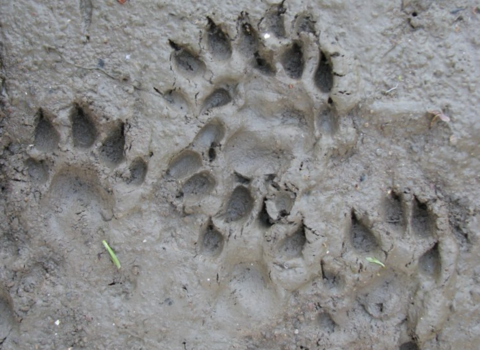This year saw the completion of the 7th otter survey of Cambridgeshire which has tracked the progress of otter populations here for the last 30 years. The survey conducted by the Wildlife Trust BCN and the Cambridgeshire Mammal Group, saw 50 volunteer surveyors visiting nearly 300 sites - mainly under road bridges crossing watercourses - to look for signs of otter, in the form of their spraint (droppings) or their distinctive tracks.
Results show an impressive recovery from only a very few signs in 1992, to a relatively stable population with otter signs on all main watercourses over the last 10 years. As it's difficult to link number of signs found to number of otters, in the future we are hoping to work with the Wellcome Trust on DNA analysis of spraint to allow a better guess at population size and the territory size of an individual otter.
From December last year to the end of February 2022 repeat surveys took place at sites where they have previously been undertaken, covering all major watercourses in Cambridgeshire and many smaller ones as well. As a bi-product the surveyors also recorded additional sightings or signs of plenty of other species which included badger, bank vole, barn owl, blackbird, common snipe, cormorant, crane, European eel, fallow deer, fox, greenfinch, grey heron, grey wagtail, kingfisher, little grebe, little owl, mallard, mole, moorhen, muntjac deer, mute swan; rabbit, red kite, robin, roe deer, skylark, wood pigeon, wren and whooper swan- a snake skin and a belemnite fossil were also found. All of these records were sent to the Cambridgeshire and Peterborough Environmental Records Centre along with data on otter, water vole, brown rat and American mink.
The Mammal Society, Environment Agency and Natural England, with support from a number of water companies, will be initiating the sixth national otter survey of England later this year – registration to take part is by 31 July.

